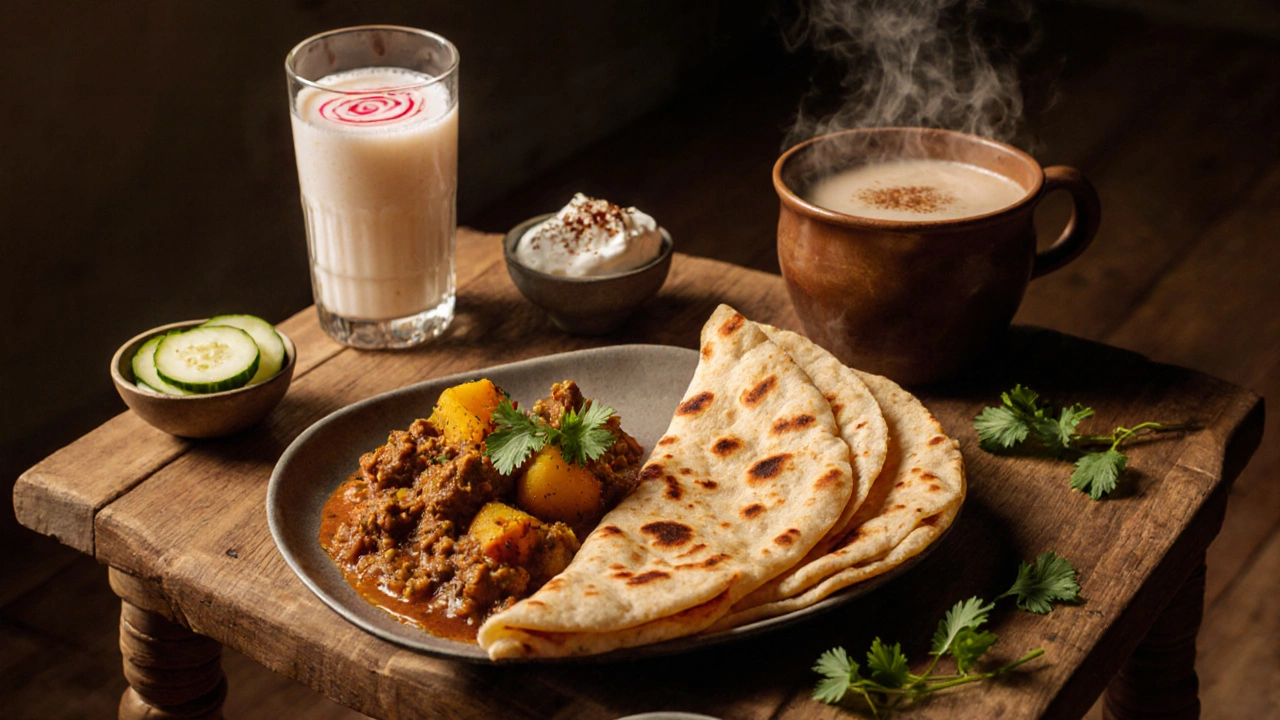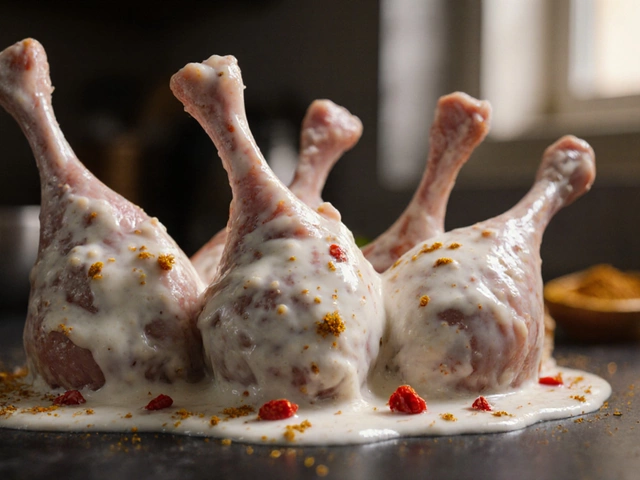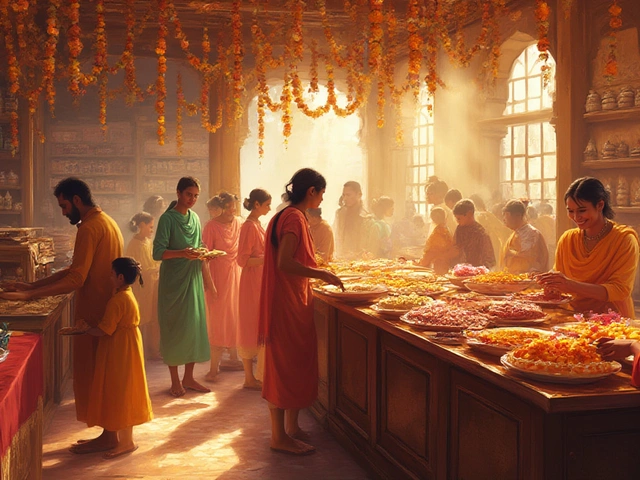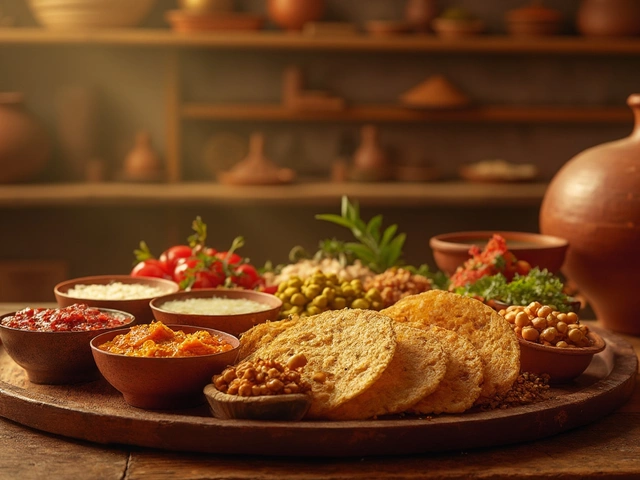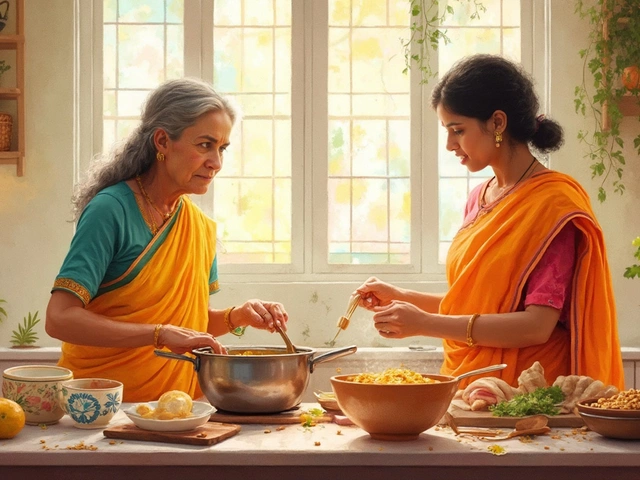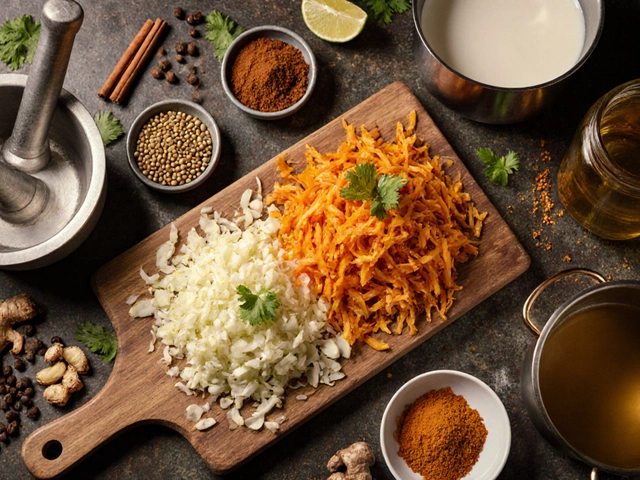Pakistani Breakfast Time Calculator
Choose Your Time Limit
Select how many minutes you have for breakfast prep:
Select your time limit and click "Calculate Options" to see suggested dishes
When you think about a hearty start to the day in South Asia, Pakistani breakfast is a vibrant mix of flavors, textures, and aromas that reflect regional diversity. From fluffy breads to rich stews, the morning table in Pakistan offers something for every palate and schedule.
Why Pakistani Breakfast Stands Out
Unlike the quick cereal bowls you might find elsewhere, Pakistani mornings often begin with a cooked dish that can take time to prepare but rewards you with comfort and energy. The cuisines of Punjab, Sindh, Khyber Pakhtunkhwa, and Balochistan each contribute signature plates, yet a few items appear on almost every kitchen counter.
Core Staples You’ll See Daily
- Paratha - a layered flatbread that’s crispy on the outside and soft inside, usually pan‑fried in ghee.
- Halwa Puri - a sweet semolina halwa served with deep‑fried puri, often accompanied by a spicy potato curry.
- Nihari - a slow‑cooked beef or lamb stew, traditionally eaten after sunrise during Ramadan but now a weekend favorite.
- Aloo Keema - ground meat with potatoes, tomatoes, and a blend of garam masala, perfect for spooning over bread.
- Chana Chaat - smashed chickpeas tossed with onions, chilies, tamarind, and fresh cilantro.
- Lassi - a yogurt‑based drink, sweet or salty, that cools the palate and adds probiotic benefits.
- Chai - strong black tea brewed with milk, sugar, and sometimes cardamom or ginger.
Regional Flavors and Signature Dishes
Punjab is famous for buttery parathas and hearty keema. In the mornings, families often line up plates of Egg Bhurji (spiced scrambled eggs) alongside fresh naan. The province’s love for dairy surfaces in thick creamy Lassi, which can be sweetened with rose syrup or flavored with mango.
Sindh brings the iconic Halwa Puri to the breakfast table. The sheer volume of puri-fluffy, puffed bread-paired with a sweet, grainy halwa creates a contrast that Sindhi families cherish on festive mornings.
Khyber Pakhtunkhwa leans toward protein‑rich dishes. Nihari, simmered for hours with bone‑in meat, provides deep, umami flavors that linger. This province also enjoys a simple Samosa breakfast, filled with spiced potatoes and peas.
Balochistan adds a rustic touch with Sajji-style roasted chicken served alongside flatbreads. Though more common at lunch, some households adapt it for a special weekend morning.
Quick‑Prep Breakfast Options for Busy Mornings
- Toast a pre‑made Paratha and top with plain yogurt and sliced cucumbers.
- Heat leftover Nihari in the microwave; serve with a fresh egg boiled to medium‑soft.
- Mix a spoonful of Halwa with warm milk for a quick sweet fix.
- Blend Lassi with a handful of frozen berries for a modern twist.
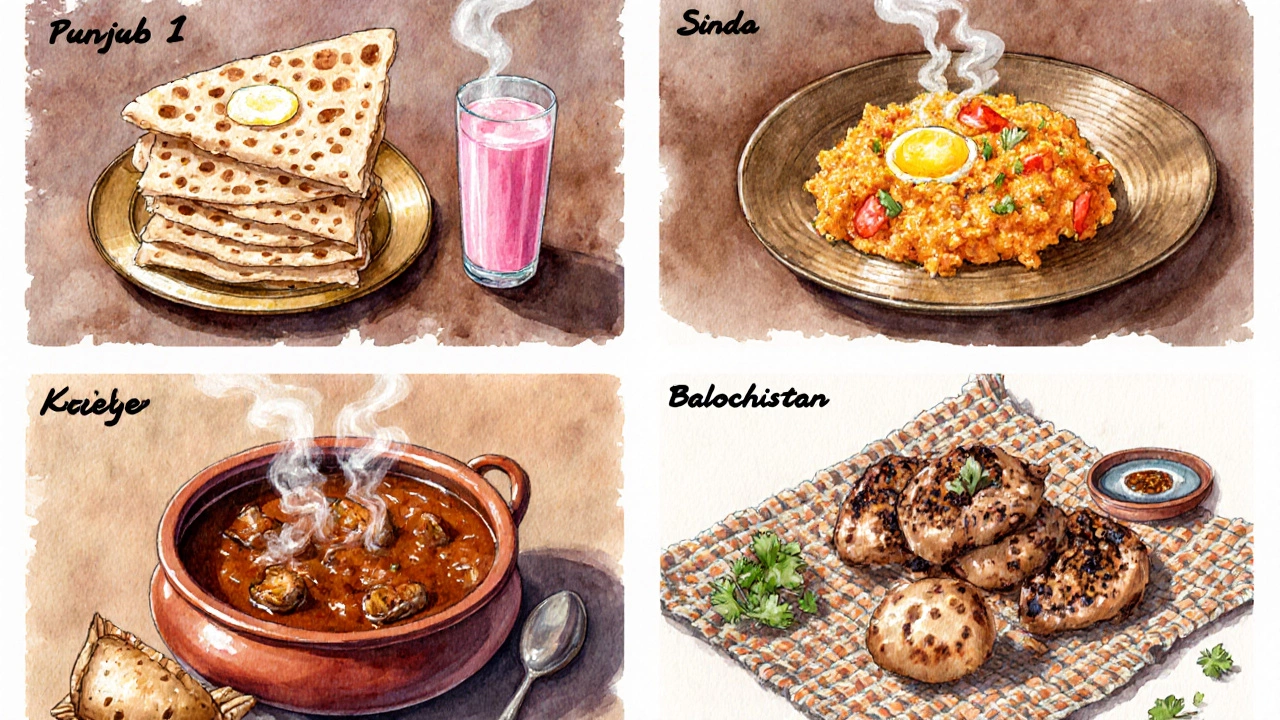
Health‑Focused Breakfast Tweaks
If you’re watching calories, swap deep‑fried puri with baked or air‑fried versions. Use whole‑grain wheat flour for Paratha dough to boost fiber. Add a side of fresh fruit-mango slices or berries-to balance the rich gravies.
Cooking Tips Straight From Home Cooks
- Keep a batch of pre‑rolled paratha dough in the fridge; it reduces prep time to a few minutes.
- For a silky Lassi, whisk yogurt with a pinch of salt and a splash of water before adding sugar or fruit.
- When making Halwa, use low‑heat and constant stirring to avoid lumps.
- To achieve a fluffy Puri, let the dough rest for at least 15 minutes before rolling. This relaxes gluten and yields better puff.
Comparison of Popular Pakistani Breakfast Dishes
| Dish | Main Ingredients | Prep / Cook Time | Typical Region |
|---|---|---|---|
| Paratha | Whole‑wheat flour, ghee, water | 10‑15 min | Punjab, Nationwide |
| Halwa Puri | Semolina, sugar, oil; wheat flour for puri | 30‑40 min | Sindh |
| Nihari | Beef or lamb, bone broth, spices | 4‑6 hrs (slow) | Khyber Pakhtunkhwa |
| Aloo Keema | Ground meat, potatoes, tomatoes, garam masala | 20‑25 min | Punjab, Nationwide |
| Chana Chaat | Boiled chickpeas, onions, chilies, tamarind | 5‑10 min | All regions (street snack) |
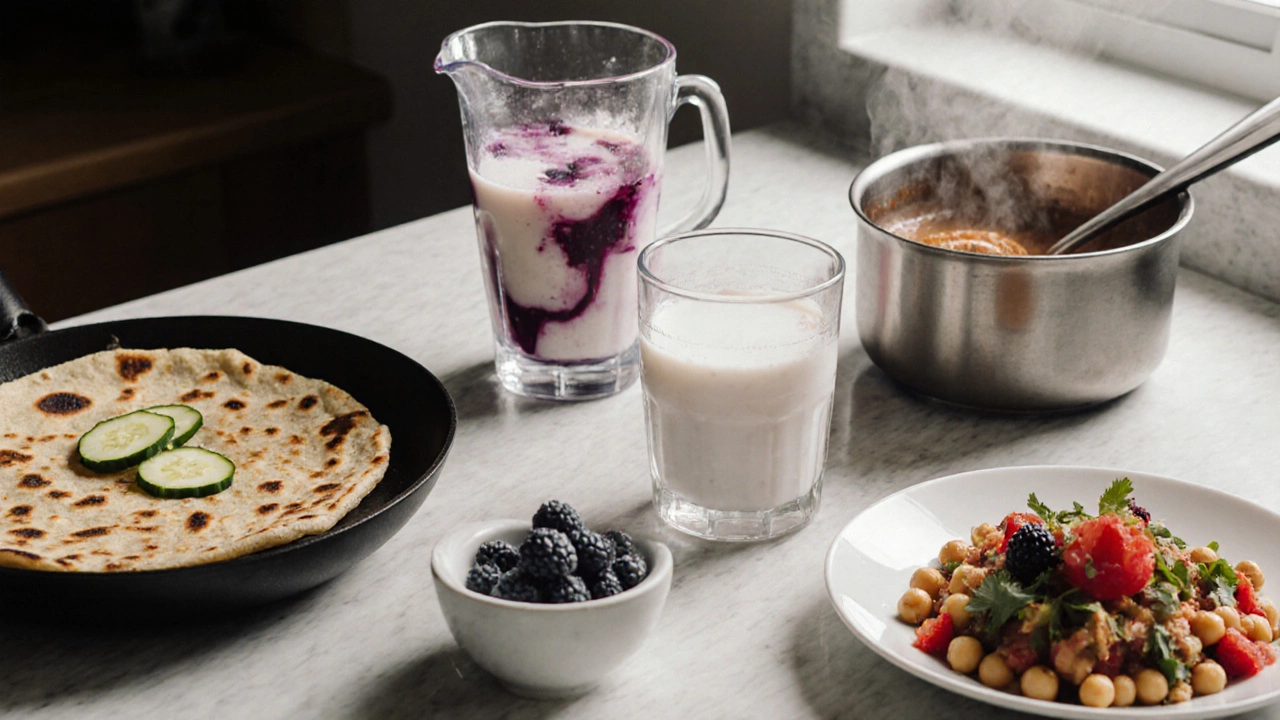
Quick Checklist Before You Start Cooking
- Gather fresh spices: cumin, coriander, garam masala, chili powder.
- Prep aromatics: onions, garlic, ginger - chop finely for even flavor.
- Measure dairy: keep yogurt, milk, and ghee at room temperature for smoother mixing.
- Plan timing: start slow‑cooked dishes like Nihari early, then move to quick breads.
- Set the table: small bowls for achar (pickles), fresh coriander leaves for garnish, and a pot of hot Chai.
Frequently Asked Questions
Frequently Asked Questions
What is the most common Pakistani breakfast?
A hot, buttery Paratha served with a side of Aloo Keema or plain yogurt is the everyday go‑to for most families.
Is Halwa Puri considered a healthy breakfast?
It’s indulgent. The puri is deep‑fried and the halwa is sugar‑rich, so it works best for occasional weekends or celebrations, not daily nutrition.
Can I make Pakistani breakfast without meat?
Absolutely. Vegetarian versions use lentils, chickpeas, or paneer in dishes like Chana Chaat or paneer‑filled parathas. Even the broth for Nihari can be swapped with mushroom stock for a plant‑based twist.
How long does it take to prepare traditional Nihari?
Traditional Nihari cooks for 4‑6 hours on low heat, often overnight. Pressure‑cookers can cut the time to about 1‑1.5 hours while keeping the depth of flavor.
What drinks are typically served with breakfast?
Two staples dominate: creamy Lassi (sweet or salty) and strong Chai brewed with milk and spices. Both aid digestion and balance the spice level of the food.





